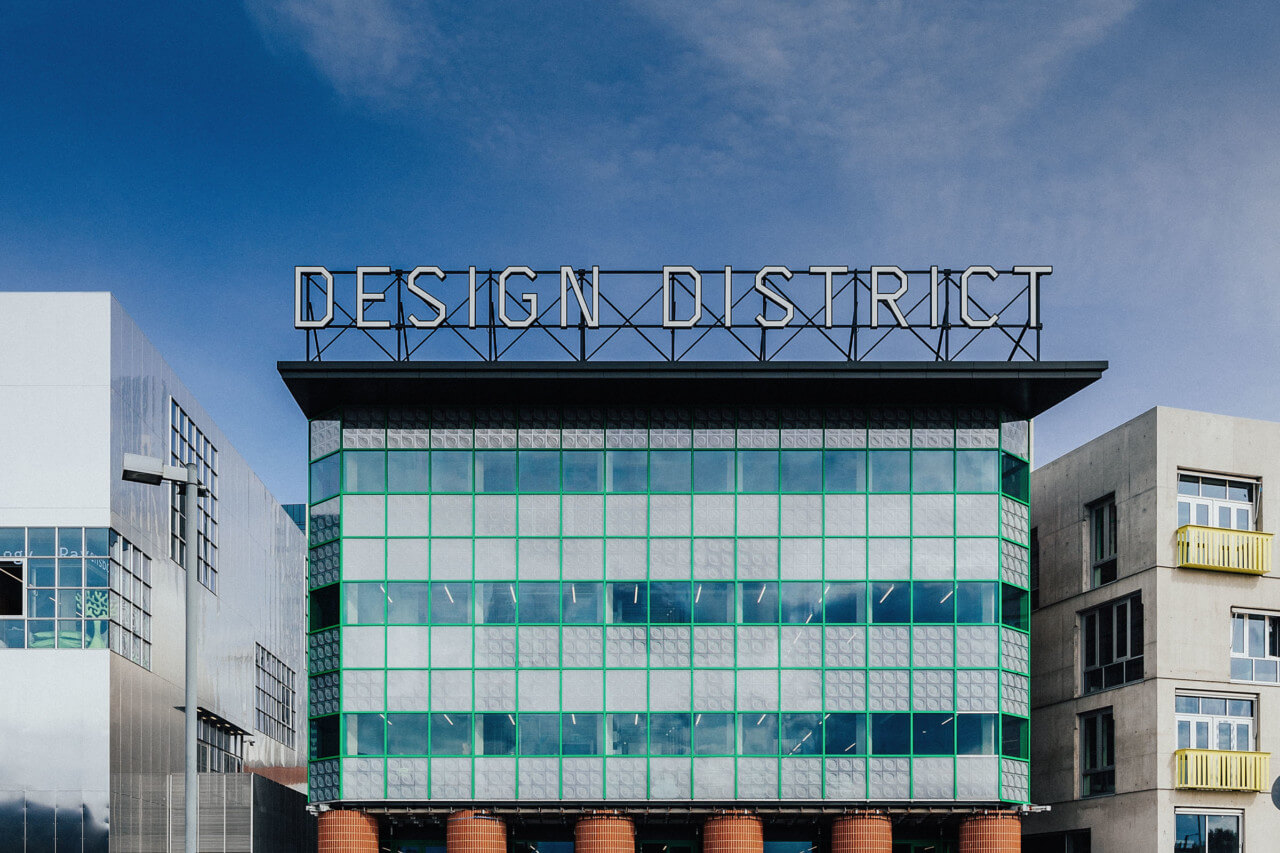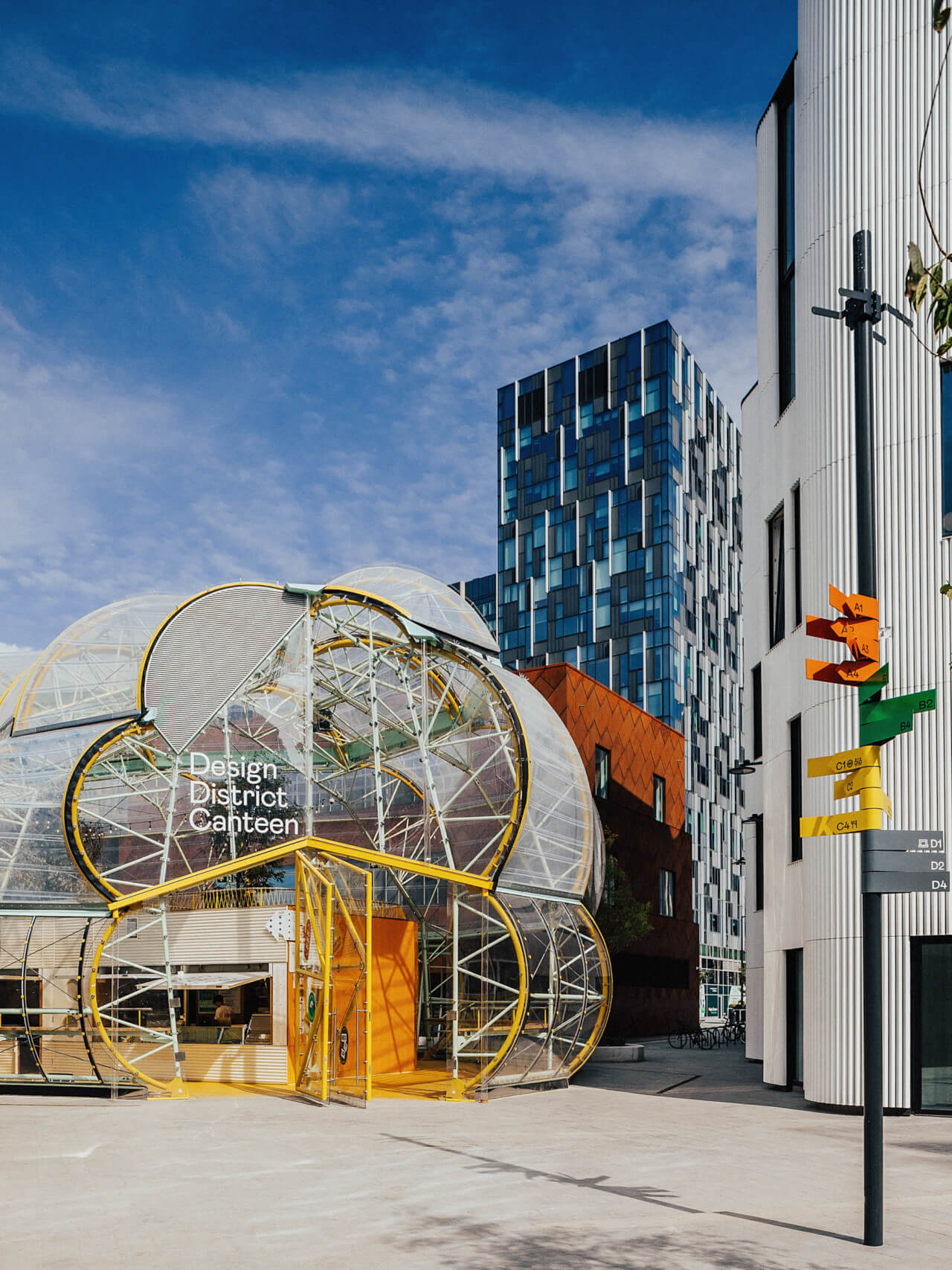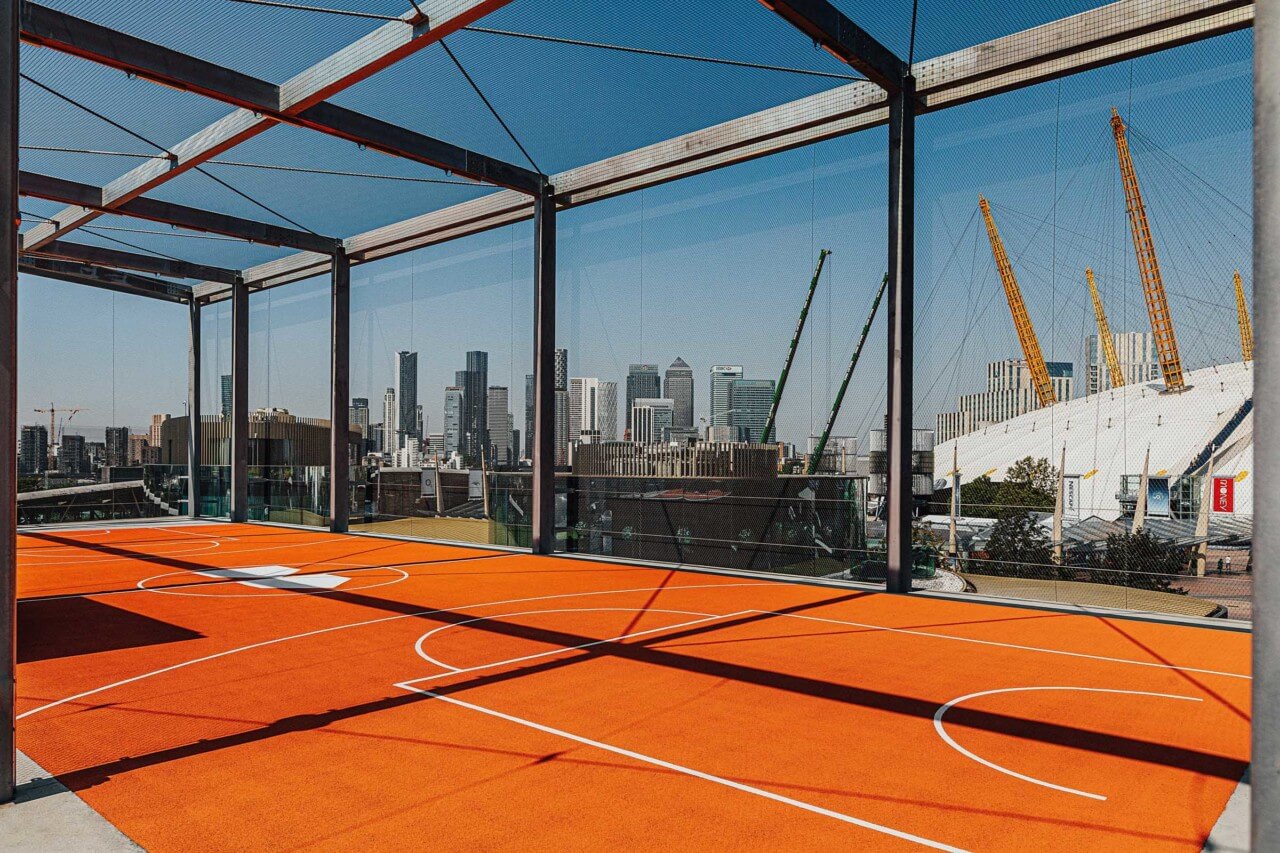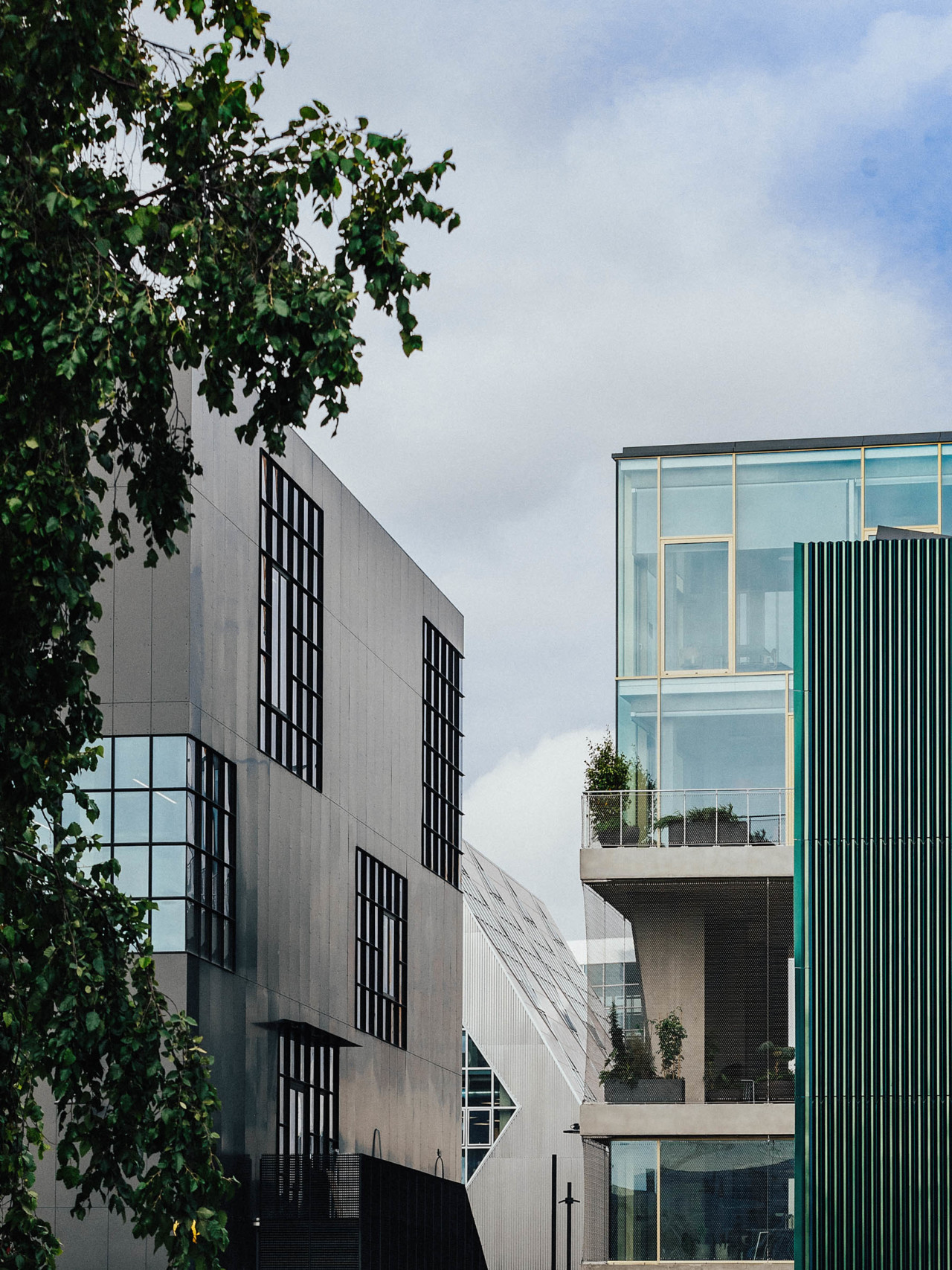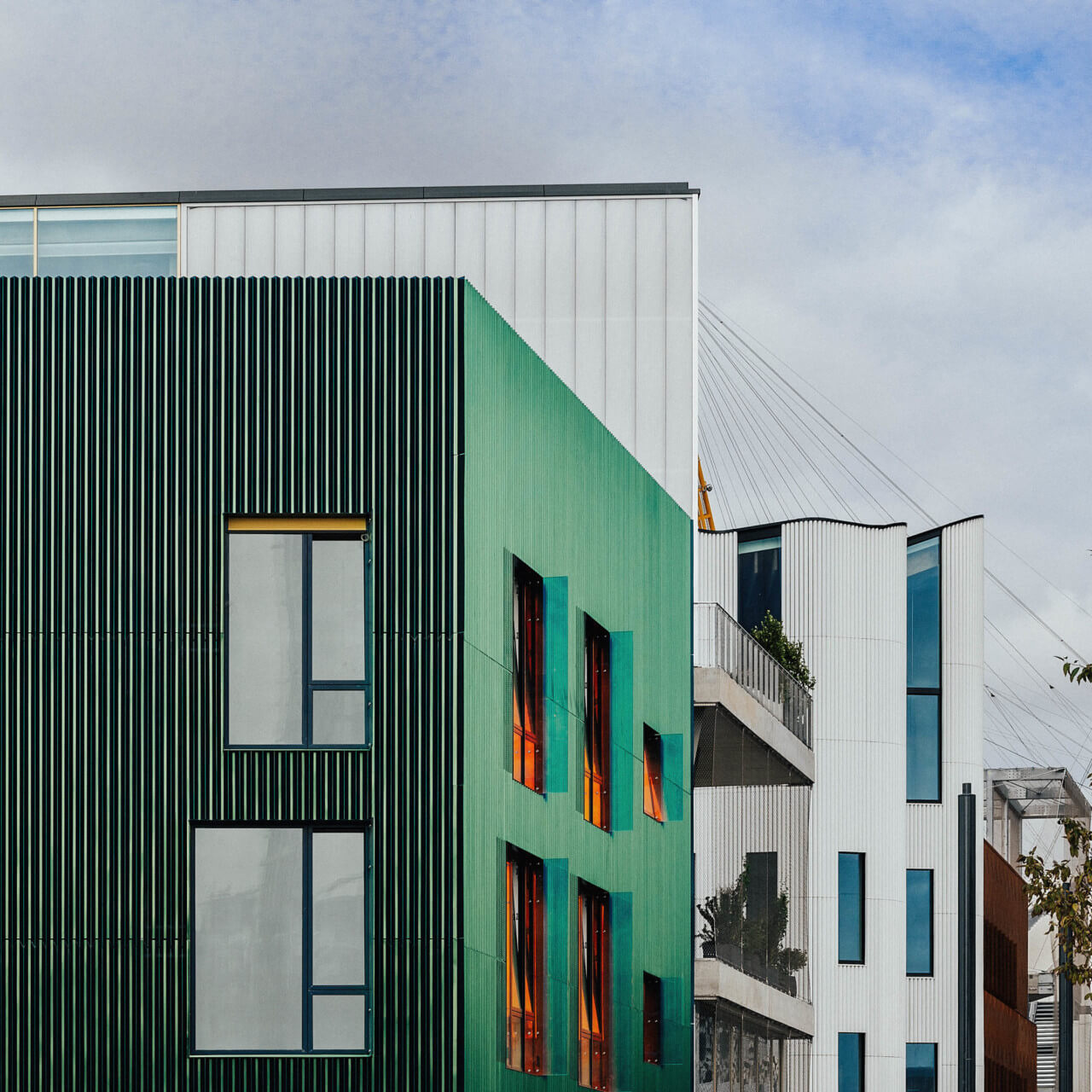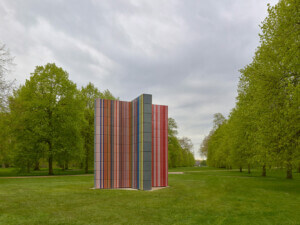When people talk of “new bits of city,” it tends to regurgitate the worst notions of planning: vast swathes of drab, developer-led schemes unashamedly built for profit and not people. At the Greenwich Peninsula in Southeast London, however, a new “bit of city” has taken a different tack, with developer Knight Dragon employing eight architects to design 16 buildings on a tight parcel of land—an approach which has produced a cornucopia of architectural whimsy with the opening of the Greenwich Design District.
The Greenwich Peninsula is famed for the Millennium Dome, now marketed as the O2 Arena, a Rogers Stirk Harbour + Partners-designed project that, upon the dawn of the noughties, was the landmark building for a new decade, and indeed, New Labour. But the regeneration scheme surrounding it stuttered; the Dome seemed doomed and Peter Mandelson, aka ‘The Prince of Darkness’ of the New Labour government was screaming at architecture critics for their slander.
However, as we creep into another new decade, the fruits of that regeneration are coming to bear. The site was previously riddled with unexploded bombs, remnants from the Second World War, and the soil was contaminated. The Dome was derided in the press for its cost—$1.8 billion today if we adjust for inflation—though much of that was to essentially clean the site. In the time since, the state sold off much of the land for a massive loss and developers haven’t exactly jumped at the chance to build here: Boris Johnson’s cable car vanity project, the Emirates Airline, being the worst addition, and the Alsop, Lyall and Störmer-designed tube station being the best to date. However, now meaningful change is starting to take place as can be seen with the so-called Design District.
So far, the district has garnered many polarising opinions, mostly from those who haven’t been to it. It’s easy to see it as a mess, a hodgepodge architectural menagerie of buildings chucked together. That, in a way, isn’t a bad way to describe what’s going on here, but it shouldn’t be taken in a negative light. Eight architects were given a sugar cube plot to build on, tasked with providing creative workspaces for the creative classes set to be ushered in. The brief stipulated three aspects to each building: A ground floor to be used for cafes and workshops, the levels above being more for desk-based workers, and the top floor being open and light for those who don’t prefer a desk. Buildings could not rise above four stories so to protect views of the O2. The only caveat, however, was that designers weren’t allowed to know what others were doing.
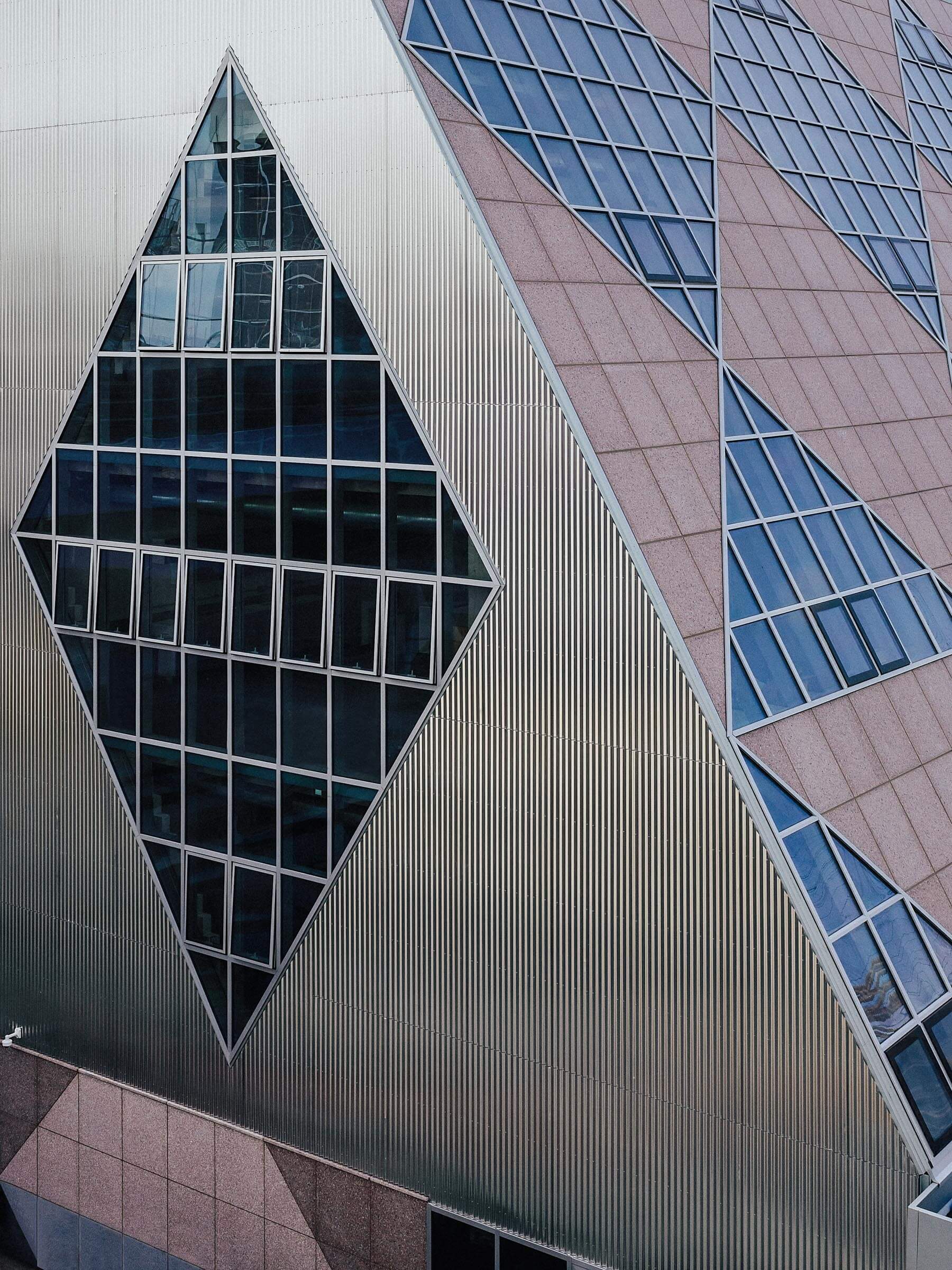
“We wanted to create that mess you get in cities, it’s nice to turn a corner and discover something new,” Matthew Dearlove, head of design at Knight Dragon, told AN, citing the souks of Morocco as well as Clerkenwell and Neal’s Yard in Central London as precedents for the master plan (carried out by London-based HNNA).
Despite the genuine architectural chaos that could ensue, the master plan ties it all together well, with the typically translucent, SelgasCano-designed food hall being a focal point for the scheme, sat at the nexus of a convenient route through to the O2 arena. With this in mind, landscape architects Schulze+Grassov have installed lighting that either encourages passers-through or not, depending on the District’s desires. When in full swing, as it was on the opening evening recently, the food hall is the star of the show, glowing like a yellow caterpillar and acting as a hub of activity.
Other buildings are also vying for your attention: Barozzi Veiga’s shimmering facade encases the home of the new Institute for Creativity and Technology for Ravensbourne University. For Dearlove, the university’s presence was crucial as it was eyed as the cultural lynchpin for the creative industries, underpinning employment. In the dichromic facade, the green hues of the adjacent building by David Kohn Architects flicker akin to a flame, a nod to the gas holders that once occupied (and polluted) the site. Kohn’s playful design sees oversized red columns propping up a green lattice filled with glass boxes. Atop, the words “DESIGN DISTRICT” are writ large, proudly facing out.
6a architects employed a checkerboard language to the sloping facade of both its buildings, which are more-or-less identical. “If you do two buildings and one is better than the other, shouldn’t you just do the better one twice?” Tom Emerson, co-founder of 6a, told me earlier this year. Fellow co-founder Stephanie Macdonald describes the buildings as “pop warehouses” inspired by American artist Richard Artschwager’s use of Formica and other disregarded materials, which he used to make much more elegant artworks. This translates to a thin, diagrid facade which evokes the flat surfaces more aligned with commercial construction, framed here in a more playful setting.
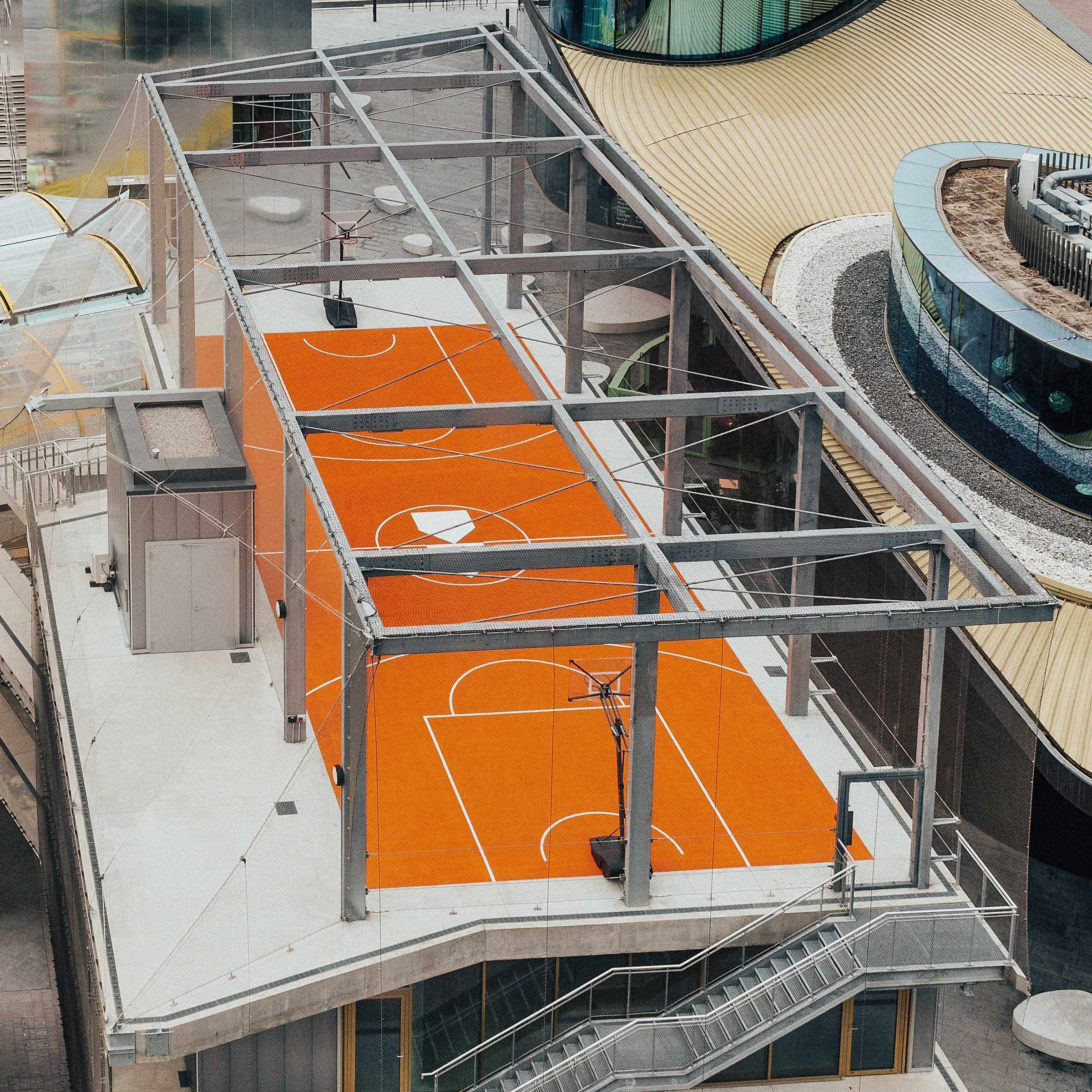
Actual play, meanwhile, can be had on the roof of Architecture 00’s structure across the plaza. The top layer boasts a basketball court with incredible views onto the financial towers of Canary Wharf across the river. The building’s most striking feature is the stainless-steel mesh which shrouds it entirely. Alarmingly, no balustrade can be seen, though David Saxby of 00 isn’t perturbed.
“Everyone thinks a building needs a balustrade,” he told AN. “The metal mesh sits tightly to the building, there’s no risk of falling.” For 00, the project was about creating the sense of enclosure using the least means possible, letting the creative activities inside being part of its “theatre.” Circulation has been pushed to the outside (or inside, depending on your definition with the mesh) with visitors able to reach the court without disturbing those in offices. “To be so extraordinarily open is a liberating experience,” Saxby added.
Knight Dragon expects 1,800 creative types to end up populating the Design District. Not all of it is finished, though tenants have begun to move into the completed buildings already; all buildings, AN was told, will be complete by the end of the year. This successful, though miniature master plan is part of a much wider, $11.44 Billion, regeneration scheme from Knight Dragon which it initiated in 2012. More than just a Design District, 17,500 homes and 753,500 square feet of office space comprise the plan for the 197-acre site.






